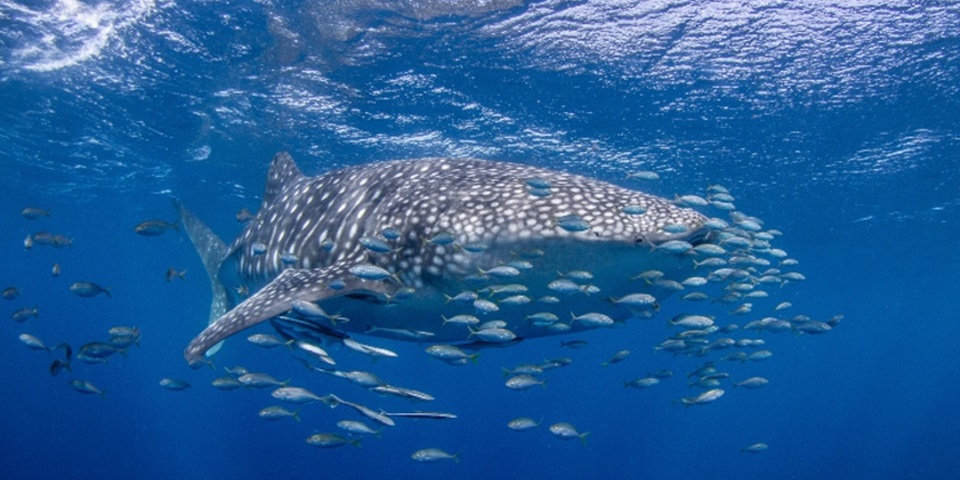News
Cutting-edge tech proves Australian whale shark tourism leads the world

Using technology akin to a ‘fitbit’ for sharks, a team of researchers has tagged and tracked whale sharks to study the effects of tourism at Ningaloo Reef in Western Australia for the first time.
In a resounding endorsement of local tourism practices, the research found the activity of boats and divers has minimal impacts.
While the research found evidence of some increases in activity levels and directional changes by the sharks when tourists were swimming with them, experts say each shark’s exposure was very limited.
It’s an important endorsement of Australian whale shark tourism operators in what is an estimated US$1.9 billion global industry that attracts over 25 million people each year at 46 sites in 23 countries.
The research, published in Journal of Sustainable Tourism, involved physically tagging whale sharks with biotelemetry devices – animal-borne, electronic devices that record data – for the first time, rather than relying on observations.
“We used biotelemetry to look at whale sharks’ movement and behaviour in the presence or absence of tourists,” Dr Brad Norman, research fellow at Murdoch University’s Harry Butler Institute and director of marine research not-for-profit ECOCEAN, said.
“We found that tourism encounters lasted for just over an hour and swimming with tourists increased the activity levels of larger sharks – those over seven metres – but not smaller sharks.”
“However, we know from photo-identification records, that most sharks are only seen on three or fewer days per year at Ningaloo, so each individual’s exposure to tourism is really limited.”
Dr Samantha Reynolds, who led the study as part of her PhD at The University of Queensland, said that exposure presented only a small fraction of each shark’s day.
“Given they only spent an average of 62 minutes swimming with tourists, that’s about 4% of their whole day, so any increases in energy it requires would be a relatively small proportion of their daily energetic costs,” Dr Reynolds said.
“This is really important data for both the animals and the industry – and would not have been apparent from purely observational studies.
“It’s also a lesson in management for the wider wildlife tourism industry.”
“Although interactions with humans like these are likely to impact wildlife to some degree, if well-managed like the Ningaloo whale shark tourism industry, wildlife tourism can be sustainable for the operators and tourists, and for the animals as well.”
The research team does caveat this is not always the case, particularly in the case of whale sharks. The methods for interacting with them and the levels of regulation controlling them vary widely.
“Some countries have very little regulation on whale shark tourism, there is overcrowding and in some places the sharks are fed to attract and keep them in areas where tourists can swim with them,” Dr Norman said.
This makes it really important – and presents a huge opportunity – for the global industry to see what we’re doing at Ningaloo and learn from it.”
Dr Brad Norman
The study was a collaboration between researchers from The University of Queensland, Harry Butler Institute Murdoch University, ECOCEAN Inc., University of the Sunshine Coast and Swansea University (Wales, U.K.).
Learn from world leading experts and play your part in the future of the planet with a Bachelor of Environmental and Conservation Sciences.News
Cutting-edge tech proves Australian whale shark tourism leads the world
Posted on
Topics